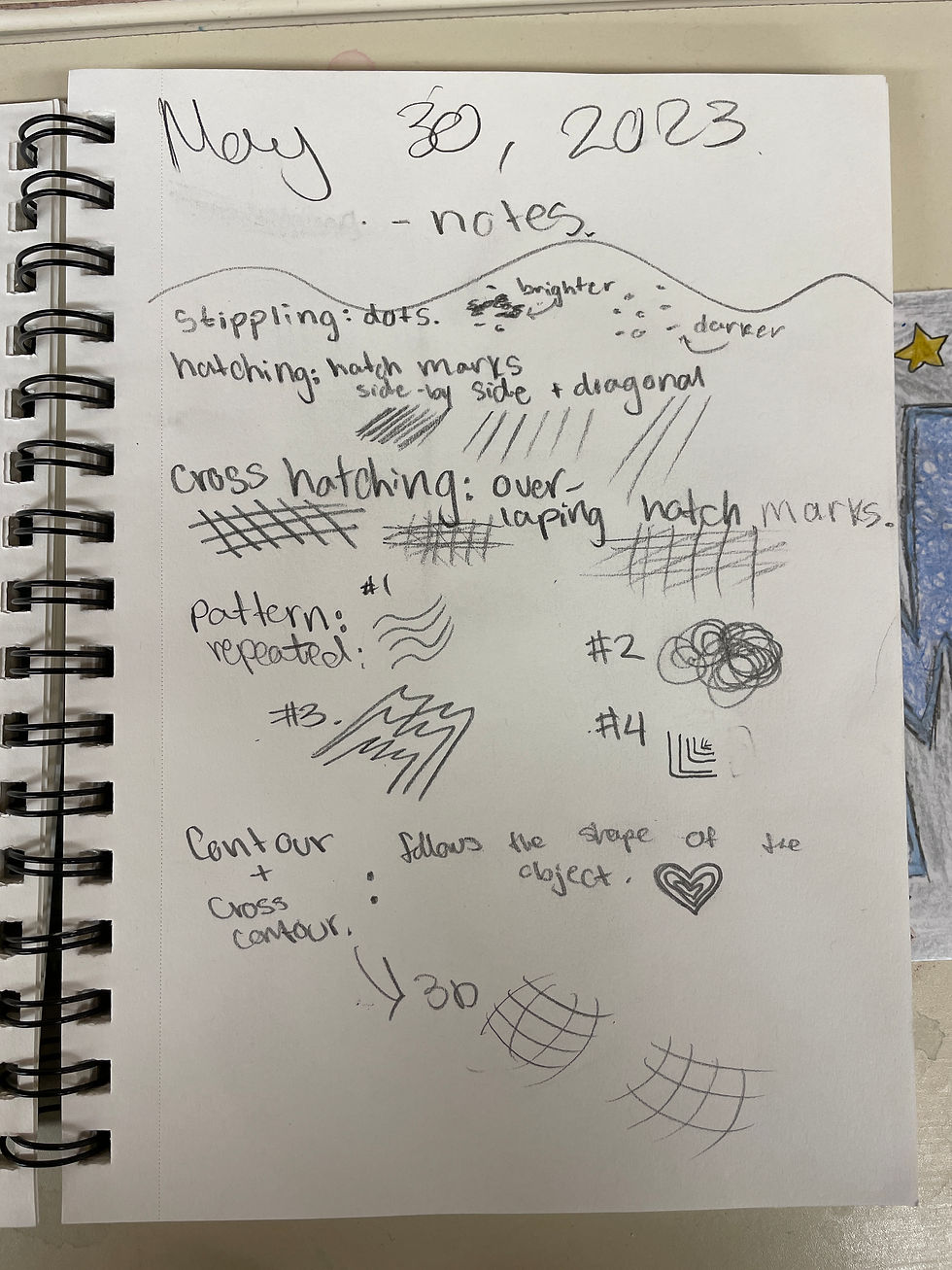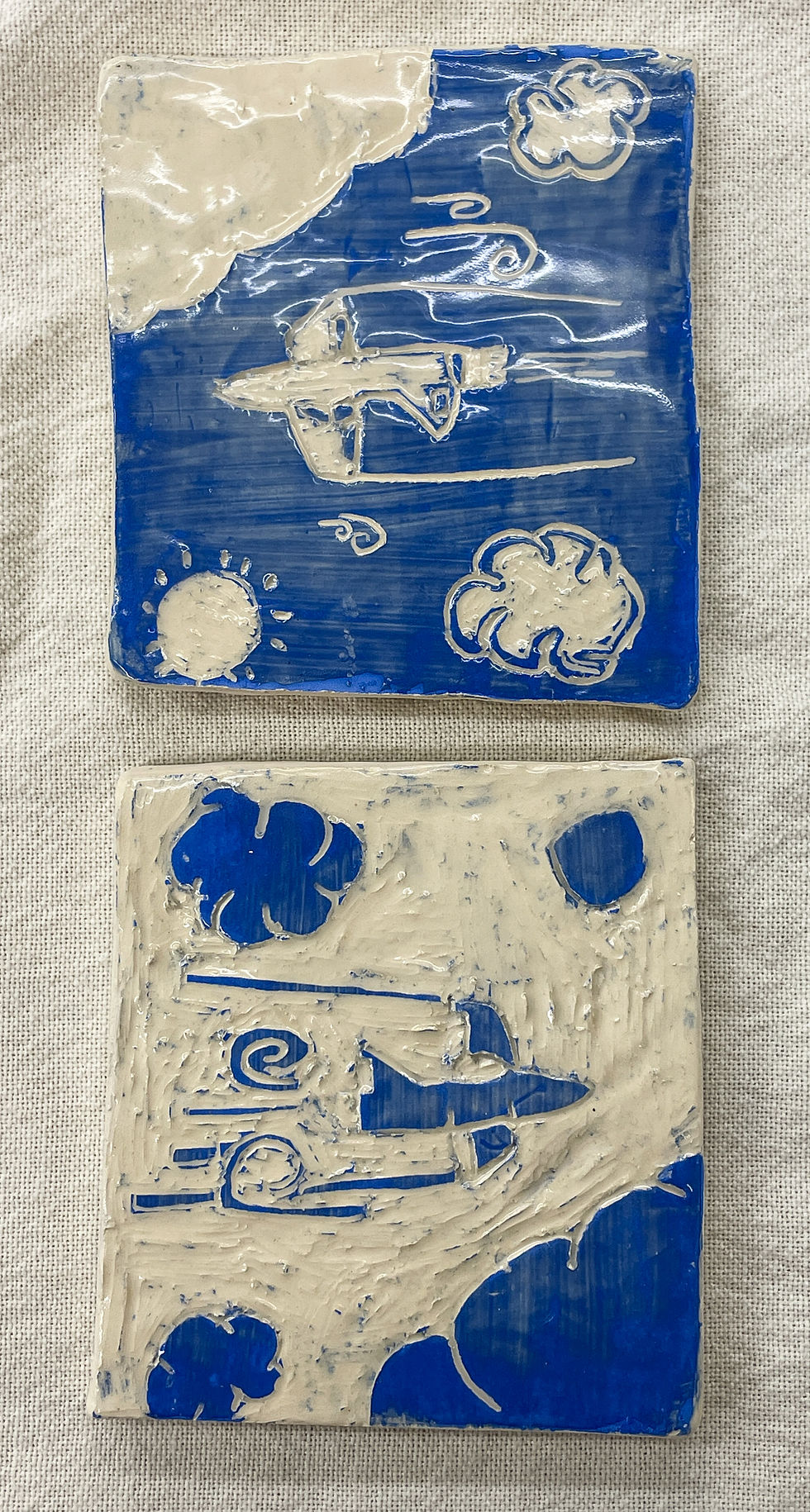Scratching the Surface with Sgraffito Coasters
- Ashley Jager
- Jun 7, 2023
- 3 min read

The 7th Grade Art class designed a functional set of coasters for their Ceramics unit this trimester!

At New Buffalo Middle School, students are exposed to a wide variety of techniques in Ceramics to build their knowledge and experience. Sgraffito is a carving technique made by carving through a layer of underglaze that is painted onto the clay surface.

Students started their coasters by researching the theme they wanted to incorporate in their set and drafting their designs. The coasters could either be identical or complement each other with different designs within the overarching theme.

Students took notes and drew several drafts in their sketchbooks before beginning the final designs.
With their designs completed, they drew and cut out templates for the overall shape of their coasters in tagboard. Students learned how to wedge their clay and roll it out to an even thickness to cut out their coasters with the templates they made.

The clay needed to be at the leatherhard stage of drying before they could carve their sgraffito designs so we spent the slab day smoothing all surfaces and edges before setting them out uncovered for a few hours to toughen up. The slab coasters were bagged up overnight so they wouldn't dry out too fast.
We continued smoothing and burnishing the coasters the next day as students came over in table groups to the designated "Teacher Zone" underglaze stations to take turns painting on a layer directly from the jar.

At this stage, we were still working with unfired coasters. Underglaze is applied before a bisque firing in the kiln.

Once the glaze dried, the students taped the templates they made to the coasters and firmly traced over the outlines of their designs with ball point pens.

This indented the lines drawn onto the surface so that we could see where to carve away.

My students sgraffitoed all the engraved lines they had transferred from the pen outlines.

We reviewed hatching techniques to demonstrate value made with marks onto the clay before continuing with the sgraffito process.

The students said it was very satisfying to carve away the negative space with lines. We emphasized balancing the space of their compositions with even amount of contrast between light and dark.
Works in progress...

When the sgraffito carving was complete, they were set out to become fully bone dry for 10 days for the bisque firing. Once ceramic, the students waxed the bottom of their coasters in groups to prevent glaze from settling on the bottom of their coasters.

The waxed coasters were dunked in a tub of clear coat glaze to give them a glassy finish.

The clear glaze is tinted green so that you can see the glaze but it fires as a transparent layer. We had a glaze dunking assembly line in one class period! The students nicknamed the glaze "melted mint chocolate ice cream."
The glaze takes a few minutes to dry before they can be turned over to sponge off any remaining glaze on the bottom.


My 7th graders asked me almost every day when the coasters had been fired so they could take them home! The finished coasters have an incredible amount of detail down to each individual mark carved away from the surface.



From an aerial view, they remind me of custom stamps on postcards each with a unique story to tell.

These coasters will be keepsakes that their families will be able to use and treasure for many years. Each set is one-of-a-kind with the maker's mark scratched right into the surface.



















































Comments